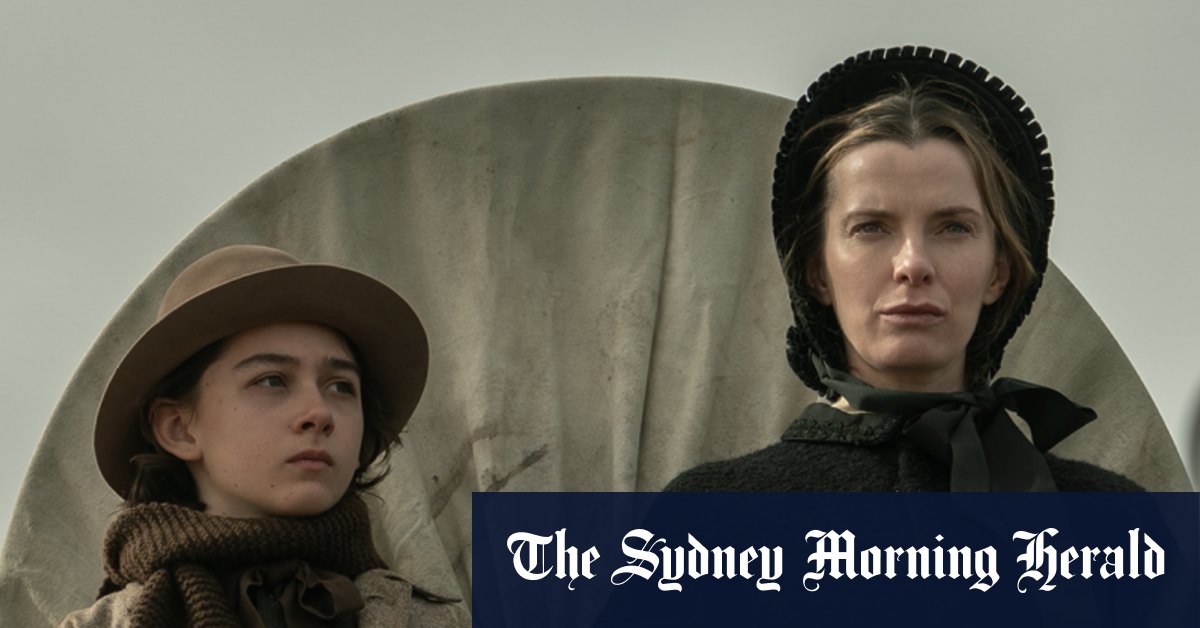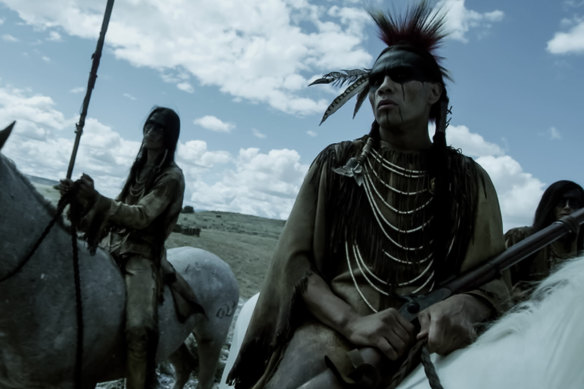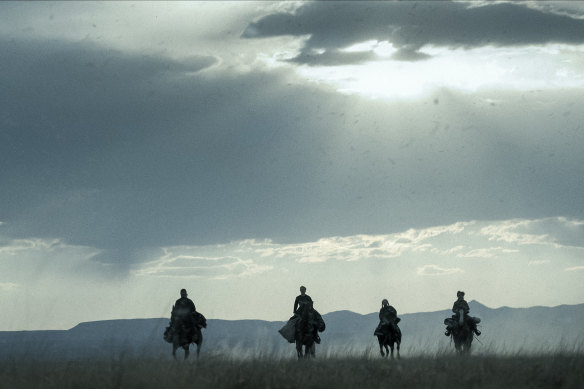
Though American Primeval is largely fiction, Berg felt he owed it to this actual, gory history to offer, in painstaking detail, as much realism as he could. “You get a little bit closer to some of the origin stories of how our country was formed,” Berg says of the series. “Those origin stories are very violent.”
The series was shot on location in and around Santa Fe, New Mexico, in 2023, with a break of several months to accommodate the SAG-AFTRA actors strike. Visiting the set early that northern summer, there was an exhaustive and sometimes exhausting commitment to realism. At a reservation near town, an exacting replica had been constructed of Fort Bridger, a trading outpost perched on a tributary of the Green River, in what today is southwest Wyoming.

Tokala Black Elk as Buffalo Run and Derek Hinkey as Red Feather in American Primeval.Credit: Netflix
That set, the equivalent of eight city blocks, included an apothecary, a tannery, racks of drying fish and a trading goods store stocked with items that would have been available in 1857. Some were historical artefacts. “Holding something that is literally from the past makes it easier to put yourself in that time period,” says Dudley Gardner, an archaeologist who consulted for the show.
By then, much of the fort had been burned, as the real fort was during the Utah War. Charred wood and ash mixed with mud underfoot. Nearby stood the skeletons of tepees, which were originally hung with elk and buffalo hide, dyed and stitched by Native artisans.
“One of the reasons why you don’t see this level of authenticity is because it’s very expensive,” Berg quips, but he wasn’t exactly joking.
The show, written by Mark L. Smith (The Revenant), centres on Betty Gilpin’s Sara, a desperate woman who hires Taylor Kitsch’s Isaac, a guide raised by the Shoshone, to take her and her son West. In telling this story, Smith tried not to prettify what life was like in the territory.

Taylor Kitsch as Isaac, Betty Gilpin as Sara Rowell, Shawnee Pourier as Two Moons and Preston Mota as Devin Rowell in American Primeval.Credit: Netflix
“It’s important that we represent the world as it truly was – good, bad, indifferent, ugly,” he says. “Once you cheat that, it doesn’t land the same.”
That commitment to truth, even amid fiction, extended to every department. The costume department built more than 1300 garments and hundreds of pairs of moccasins. Artisans worked oil, powders, paints and dirt into the textiles to dye and age them. Berg told the artisans to take the age and dye further.
Particular attention was paid to the depiction of the Native American characters, whom the western genre has often reduced to cliché or violent stereotype. The producers hired Julie O’Keefe as an Indigenous cultural consultant. O’Keefe in turn hired others who could speak to the specific experiences and customs of the relevant tribes.
Loading
“The mistake is always made that one Native person knows every single answer to all 564 nations,” O’Keefe says. She made sure the production had necessary access to experts in history, culture and language. One consultant suggested that the production should name a Shoshone leader Winter Bird and not Pine Leaf. “It’s very important that directors, producers and writers see and hear us,” O’Keefe adds.
Derek Hinkey, who plays Red Feather, a Shoshone warrior, is an enrolled member of the Fort McDermitt Paiute and Shoshone Tribe. He appreciated this attention to detail, especially seeing so many Indigenous actors dressed in tribal regalia. “You walk up on set and it’s wild, man,” he says. “I grew up among my people. But to be in a different environment where they’re all in buckskin and we’re all together, it was unreal.”
American Primeval is streaming on Netflix.



